
Welcome to the WDAS monthly newsletter for October 2018: a digest of the month's latest contributions to our website.
Below you'll find Society News, Sky Notes; details of our events at Hook's House Farm and Westerdale; the 'Yorkshire to Mars' Museum Lecture; and our York trip to the FAS Convention.
Society News
This year’s event proved to be another great success, even though skies didn’t entirely play ball.
Having met at Mark’s to sort out equipment and who was going with whom etc, eight members travelled over in convoy to Robin Hood Bay, arriving in good time at the campsite. A bank of cloud in the west just couldn’t make its mind up which way to trundle, but skies to the south, east and northeast remained pretty clear at the start.
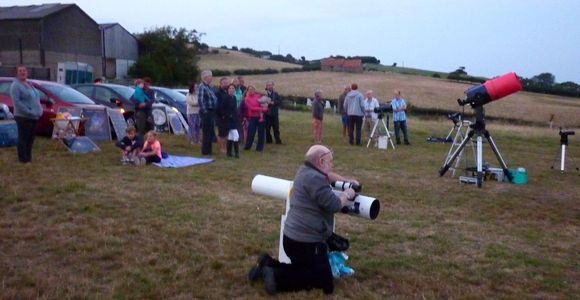
With seven scopes deployed, interest on the campsite was high, and a considerable gathering massed behind the instruments. Mark demonstrated the scale solar system, with help from the audience, who were keen to assist and much enjoyed being part of the solar system for a little while.
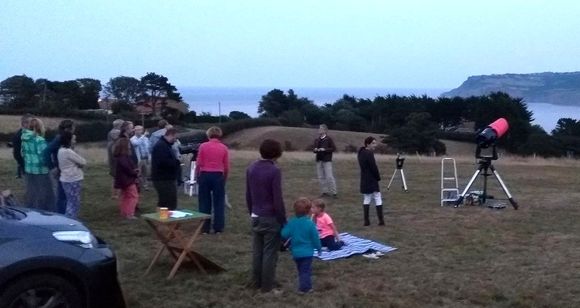
As twilight deepened the manual scopes were turned toward Saturn before the pesky cloud bank obscured it. The Meade LX 200, as we know, has to be correctly aligned with guard stars, which takes time, so only perhaps ten minutes of viewing Saturn was possible before the inevitable happened and clouds hid it for the rest of the event. Still, Mars was well placed and remained on view long enough for everyone to have a good look through the eyepiece. It did eventually disappear behind cloud.
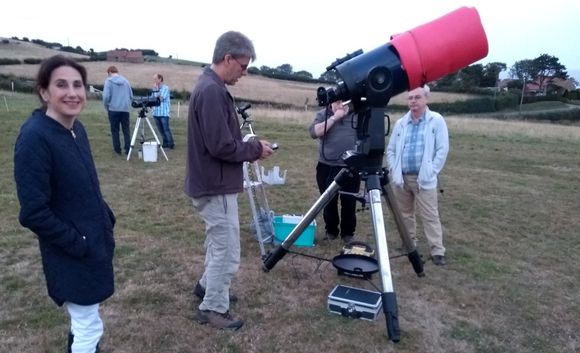
Our pesky cloud bank then fragmented for a while allowing a laser point tour to be partially undertaken, before attention turned toward deep sky objects. A game of hide and seek thereafter ensued with many of our favourites visible in patches of clear, before patches of cloud hid them again. Still, i think we managed as people stayed with us, asking some great questions, although the sausage rolls may have helped.
By 22:00h cloud started to gain the upper hand, reducing our available sky to a small portion in the east and so we called it a night. Not the clearest conditions we have experienced from Hook’s, but nevertheless it was just good enough for everyone to wend their way home pretty satisfied with all that they has seen, heard and experienced. Thanks to Andy L, Barbara and Mark, Elaine and Lee for transportation, Andy, John, Keith and Lee with scope assistance.
Another ‘will it, wont it’ evening, for our visit to Westerdale on September 14th, which in some respects was similar to the Hook’s house event. Setting off from Mark’s in a two-car convoy, managing to shoehorn in the LX 200, Mark’s dobsonian, a small refractor, John L, Keith, Barabara, and a couple of Marks, we arrived at the village hall with already a gathering at the car park. Westerdale legend and fellow member John Randles was on hand as usual, and it was nice to meet Nola, who had organised the event at that end.
Sky conditions were 50/50, the good 50 being to the south, which fortunately was where the planets were located. Jupiter was actually only visible because of the dip in the moors, and although unstable in the eyepiece, you could make out the Galilean moons. Saturn was much clearer, the wow factor clearly evident as people stepped up to the eyepiece. Mars refused to come out and play, hid behind the trees to the south, and eventually cloud. Yes, the cloud did eventually build up, so we all ventured into the village hall for plan B, Mark giving a presentation using the Starry night program.
As skies refused to clear outdoors, this lasted until almost 22:00h. Stepping back outside to dismantle the scopes, we were a little surprised to find a very light rain shower must have crossed over Westerdale, the telescopes and equipment covered in individual rain drops. Fortunately the scopes were orientated pretty much horizontally so no harm was done to the optics. Having said our goodbyes and pencilled in a date for next year, we headed back to Whitby under clearing skies. Many thanks to Barbara and Mark, who went above and beyond in helping out with transport.
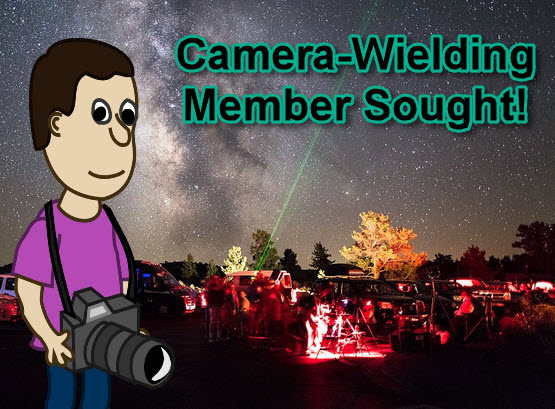
We're looking for a Member who can help-out with taking photos at WDAS events. Benefits include:
- Practicing your night-photography skills
- The opportunity to have your artwork published and credited on the WDAS website each month
- The sure knowledge that you'll be improving the Whitby-Astronomers website
- The chance to spend happy evenings on West Cliff and other exciting places
- And no particular need to be able to name a single constellation!
If you can do this... we need your help! Now you couldn't refuse a help request, could you? (Contact Mark or Andi if you're up for the task!)
Even though our society is a fully paid-up member of the Federatation of Astronomical Societies, the annual FAS convention is an event we have never previously attended, primarily because it is more often than not held in places too far from Whitby to be reasonably reached with a ‘days’ time frame’.
For their 2018 convention however, the FAS ventured North, hosting the event at York University on Sept 22nd, so it was too good an opportunity to miss....and we very nearly did, given the relatively short notice publicising the event. Delays in emails sent out being attributed to the search for a venue at a reasonable hire cost, a factor which has seen a number of lecture meets (including Leeds Astromeet) fall by the wayside in recent years.
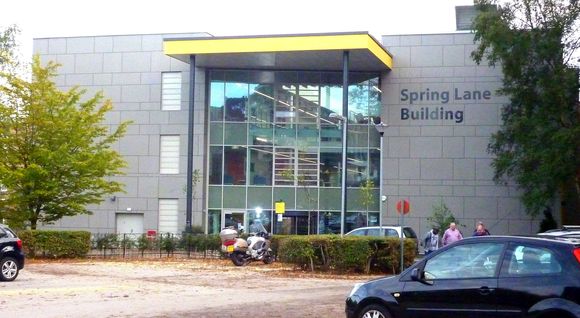
With longer forewarning we may have taken 6 or 7 over to York, but as it was just John, Lee and Mark travelled across, setting off at 07:45h, reaching York University West Campus Spring Lane Building, with barely 5 minutes to spare before the first lecture. We were joined by Mark’s friend Mike Welham, who had travelled down the A1 from near Richmond.
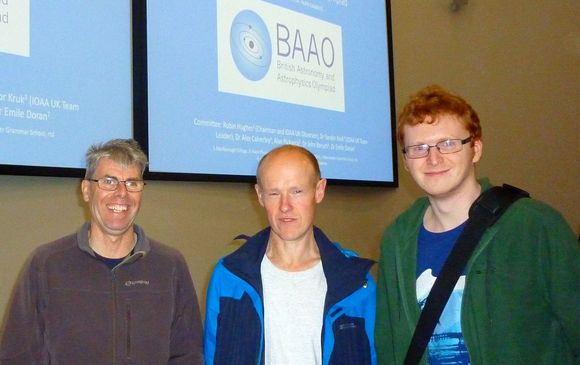
The lecture auditorium sat 350 and was great for lecture purposes, with steeply banked seating, a surface to write on and two huge side-by-side screens. It was a shame that at best only around 75 people were there.
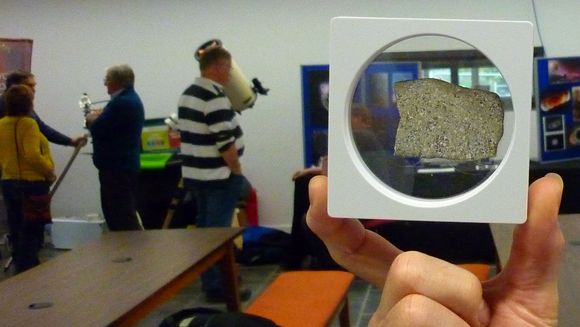
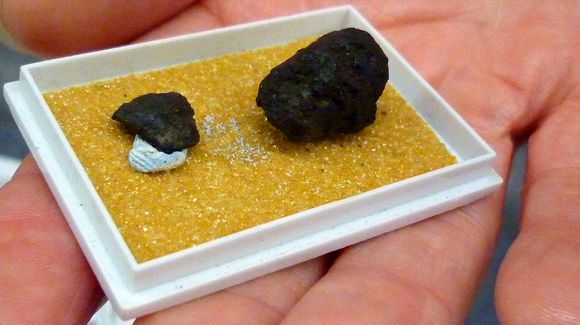
Mark holding pieces of Vesta (top) and the Chelyabinsk meteorite (bottom)
I won’t now go into much detail about the lectures themselves (all excellent), but will report more fully on these over the next couple of monthly notes. Suffice to say the day went really well, no one nodded off, Mark bought a Tektite, and we all made it home safely. But here is a brief synopsis of the lectures.
The Gravitational Sky
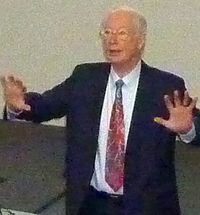 Prof Mike Cruise
Prof Mike Cruise
University of Birmingham
President, Royal Astronomical Society
In 2015 the search for the gravitational waves predicted in 1916 by Albert Einstein finally achieved success. The LIGO collaboration published the first direct evidence of black holes colliding far away in the cosmos. Since then a series of such violent events has been studied using the new technique of gravitational wave astronomy. As with electromagnetic astronomy, different frequency bands bring us information on different objects and allowing us to explore the physics of massive objects. The talk gave an introduction to the Gravitational Sky and what we may expect to learn about our Universe using these new techniques and instruments.
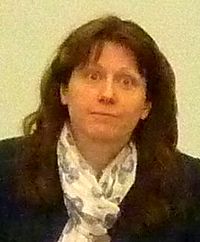 Black Holes & Spin-offs
Black Holes & Spin-offs
Prof Katherine Blundell OBE
University of Oxford
The popular notion of a black hole "sucking-in everything" from its surroundings only happens very close to a black hole. Far away, the pull of the black hole is identical to that of anything else of the same mass.
However, black holes do give rise to many remarkable phenomena such as extragalactic quasars and, in our own Galaxy, micro quasars. This is because gravity is not the only law of physics that must be obeyed. Matter can be spun off from near black holes in the form of winds and jets that spread through their surroundings and thus cause black holes to have tremendous cosmic influence many light years beyond their event horizons.
Prof Blundell described the approach she has taken, setting up a remarkable planet wide optical observing survey called the Global Jet Watch, which investigate these phenomena, and their spin-offs. It turned out to be a most uplifting experience, as you shall eventually find out.
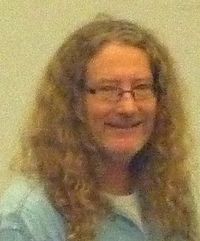 How the Universe Will End… not well
How the Universe Will End… not well
Prof Brad Gibson
University of Hull
The popular notion of a black hole "sucking-in everything" from its surroundings only happens very close to a black hole. Far away, the pull of the black hole is identical to that of anything else of the same mass.
However, black holes do give rise to many remarkable phenomena such as extragalactic quasars and, in our own Galaxy, micro quasars. This is because gravity is not the only law of physics that must be obeyed. Matter can be spun off from near black holes in the form of winds and jets that spread through their surroundings and thus cause black holes to have tremendous cosmic influence many light years beyond their event horizons.
Prof Blundell described the approach she has taken, setting up a remarkable planet wide optical observing survey called the Global Jet Watch, which investigate these phenomena, and their spin-offs. It turned out to be a most uplifting experience, as you shall eventually find out.
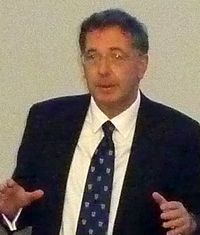 Reaching the Stars: developing the British entry for the Astronomy and Astrophysics Olympiad
Reaching the Stars: developing the British entry for the Astronomy and Astrophysics Olympiad
Charles Barclay
Director, Blackett Observatory, Marlborough College
Vice-President, Royal Astronomical Society
Following a trial entry in 2015, when a British team first entered the Astronomy and Astrophysics Olympiad –who knew? We have since gone on to win 1 Gold, 4 Silver and 2 Bronze medals in 3 annual International Olympiads, finishing as high as 6th in the country medal table out of 45 competing.
Publicity and finance are now needed to ensure our best students are selected, regardless of background or location. His talk detailed the development of this new venture for aspiring secondary level students.
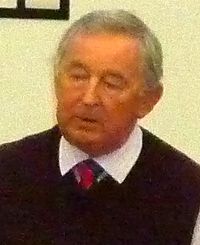 The Changing Scene in Astronomy
The Changing Scene in Astronomy
Prof Ian Robson
STFC
Since the first use of the telescope in 1609 astronomers have made amazing discoveries about the Universe in which we live. Technological improvements have meant bigger and better telescopes and novel instruments spanning the entire electromagnetic spectrum and beyond. This talk gives an illustrated overview of this development and the discoveries that have led to our current knowledge of the Universe and concludes with the onset of ‘Big Data’ in modern astronomy and the changing scene facing astronomers today.
The final lecture was to have been given by Prof John C Brown OBE
Emeritus Professor of Astronomy, Glasgow University, Astronomer Royal for Scotland
On Sun Plunging Comets- Hypersonic Snowballs in Hell.However what Prof Brown had not factored into his day was the decidedly non-hypersonic rail journey from hell! Suffice to say he couldn’t make it. So Prof Brad Gibson came to the rescue, giving another talk...
 Hunting for Aliens
Hunting for Aliens
Prof Brad Gibson
University of Hull
Looking at how and where and possibly varied life may arise and be. He gave a similar talk at the Leeds Astromeet a few years ago, but this was a little different and rounded off the long day (18:00h by now) with a flourish.
It looks as though for the foreseeable future the Leeds Astromeet has fallen by the wayside, mainly due to expenditure and new university rules.
There may be a chance of it being resurrected in a different format and at a different venue in the future, but as the last one held in 2016 apparently ran at a loss, Leeds AS are in no hurry to repeat the exercise. (^p^)
The society meetings restart in October, the first being on Tuesday 2nd. We shall be looking back over the summer activities, and looking ahead to future events, both this year and next (our 25th).
Naturally, the Starry Night program will be utilised, and some thought will be given to some upcoming phenomena. Hope you will be able to join us (see WDAS diary for venue and time etc).
This is part of the Dark Sky festival involving all the North York Moors dark sky sites. We shall be hosting the event for Danby Moors Centre on October 27th.
The public book to attend the event, with places at the Danby moors centre limited to 60 adults, plus a number of minors, so we could be talking 70-90 people if it is fully booked. We hosted a similar event last February, which was very well attended and received, enjoying clear conditions, great for observing but a tad chilly i recall. The event is due to start at 18:30h and therefore we are looking to be on site by 18:10h (setting off no later than 17:45h) making use of the little daylight still available for setting up scopes.
Personnel and transportation is therefore requested, as we would like to field 6-8 scopes dependant on the weather. If conditions are so-so, Mark will be giving a presentation indoors, though we hope to carry out a scale galaxy system outdoors (something new). Should it be an awful forecast, the event will be cancelled- though we shall have to wait until a few days before to make sense of the forecasts.
In terms of observing success, if conditions had remained as per the early part of summer, it would have been A*.
Alas, all the really good weather coincided with the light evenings in late May, June and the first half of July, and was of little use for our purposes. Nevertheless we had a few notable star party event successes. Regatta was rather poor, no sunspots, and no evening events at all, but matters did improve for Folk week and although by no means vintage, the Bank holiday, Hook’s and Westerdale all turned out to be enjoyable events.
If this summer’s diary could be likened to a well known beer advert I guess it would be… “so close, but not quite Carling”. If you get my drift.
Summary: B-.
...we shall again be organising a WDAS Christmas meal for members and their friends, spouses, etc. We are probably looking at The Hare and Hounds in Hawsker again. We shall discuss at the October meeting. Conformation of date will then be in November’s notes.
Events
 Observe the night sky with us at the Bruce Observatory, Whitby School
Observe the night sky with us at the Bruce Observatory, Whitby School
Observing Nights are held weather permitting: check for a relatively clear sky before leaving home. If in doubt, Mark can be reached on 07886069339
Please note the college drive gate is now operated via a electronic key code - so anyone wishing to attend must be at the car park at the top of the drive by 19:00hrs - unless an arrival time has been arranged with Mark/Keith.
 Observe the night sky with us at the Bruce Observatory, Whitby School
Observe the night sky with us at the Bruce Observatory, Whitby School
Observing Nights are held weather permitting: check for a relatively clear sky before leaving home. If in doubt, Mark can be reached on 07886069339
Please note the college drive gate is now operated via a electronic key code - so anyone wishing to attend must be at the car park at the top of the drive by 19:00hrs - unless an arrival time has been arranged with Mark/Keith.
